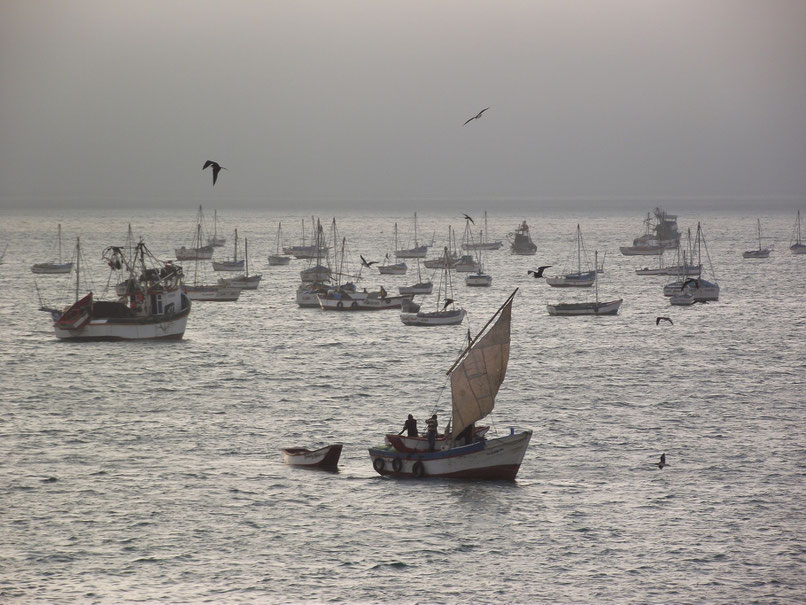
By the time we left Mancora, our first stop in Peru, Dan and I were feeling pretty down. Although nothing terrible had happened, we'd spent too much time in tourist hell-holes, been ripped off a bit too often and just felt a little out of our Spanish speaking depth in the dirt-cheap campsites we'd been staying in. To make matters worse, a manic, middle-aged Australian woman approached us in Guayaquil bus station asking for $10, quickly changed her story and ran off with the money without saying thank-you. The final straw came when, after only managing to hitchhike about 50km all day, our final lift turned out to be an "unmarked taxi".
We were on the edge of the mountainous desert- the out of sight coastline on our right and the desolate town El Alto on our left. Both directions seemed like a long hot walk, so when a truck stopped to ask us if we wanted a lift down the cliff road we jumped straight in the back.
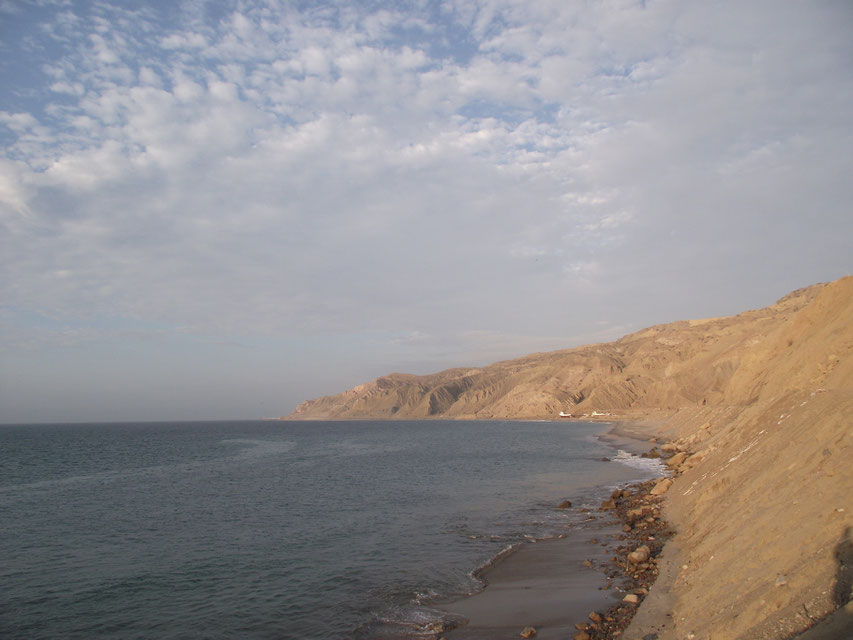
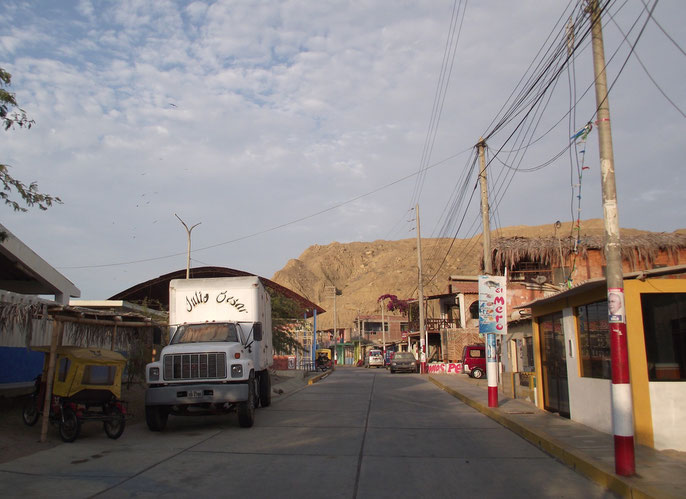

After the long winding descent, I was happy to see the sleepy little fishing village of Cabo Blanco appear around the corner.
Although we could have camped out of site of any houses, we were invited by a small girl and her family to pitch-up in front of their bamboo-fronted house.
Over the next couple of days, we cooked in a hole on the beach, relaxed and explored the coastline. The family even gave us some food; freshly caught fish and octopus, rice, vegetables and an egg with bread for breakfast.
Everything we cooked for ourselves was always crunchy with sand.
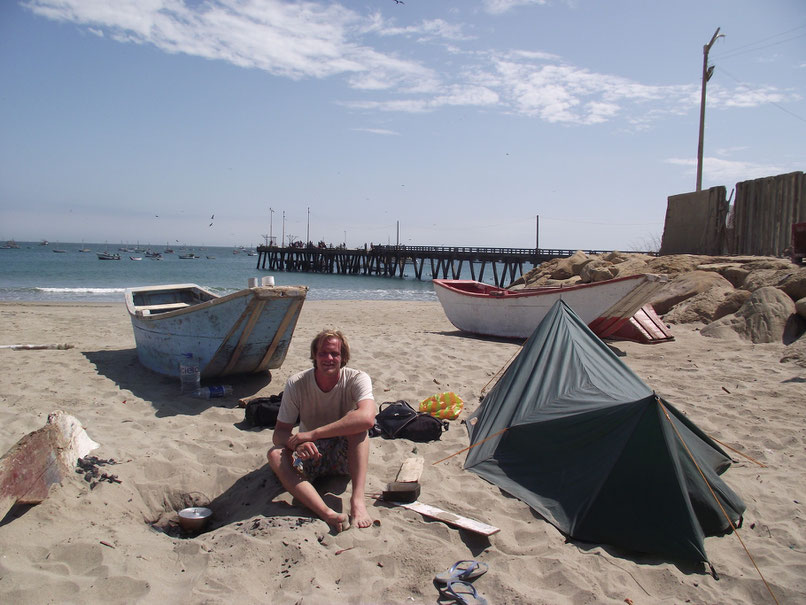
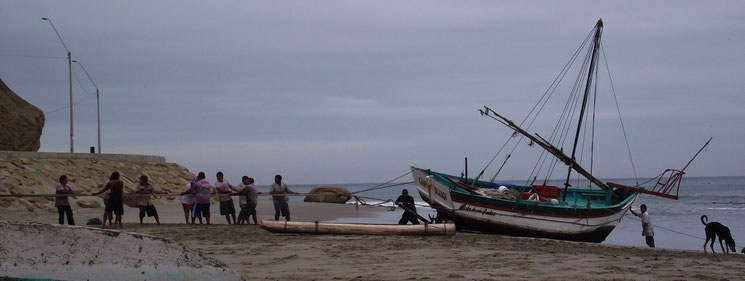
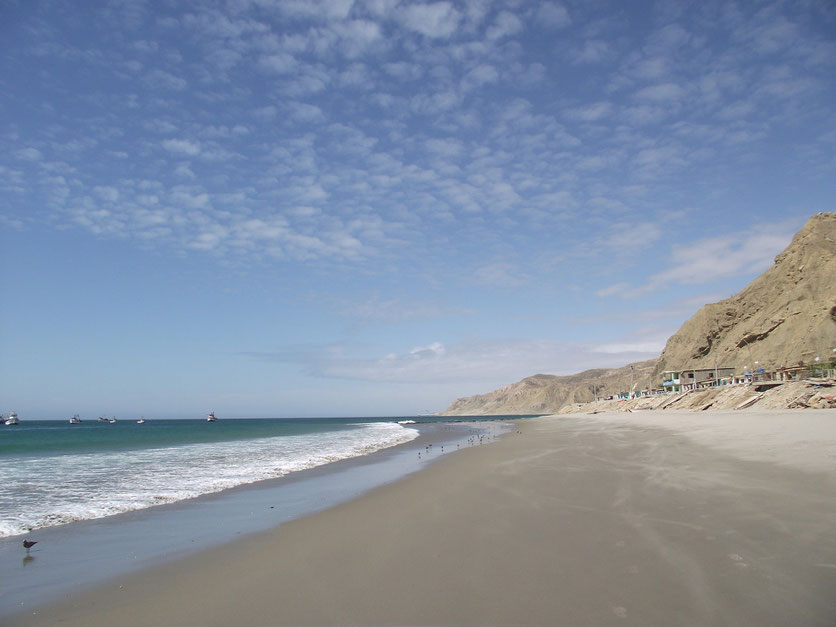
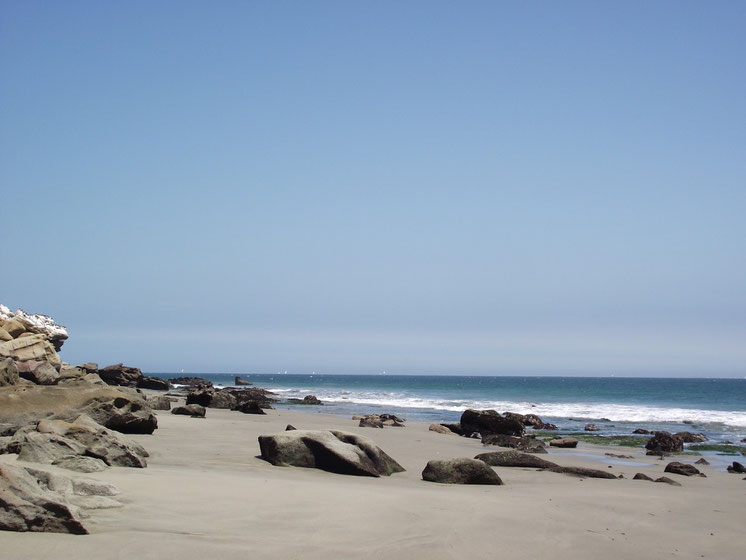
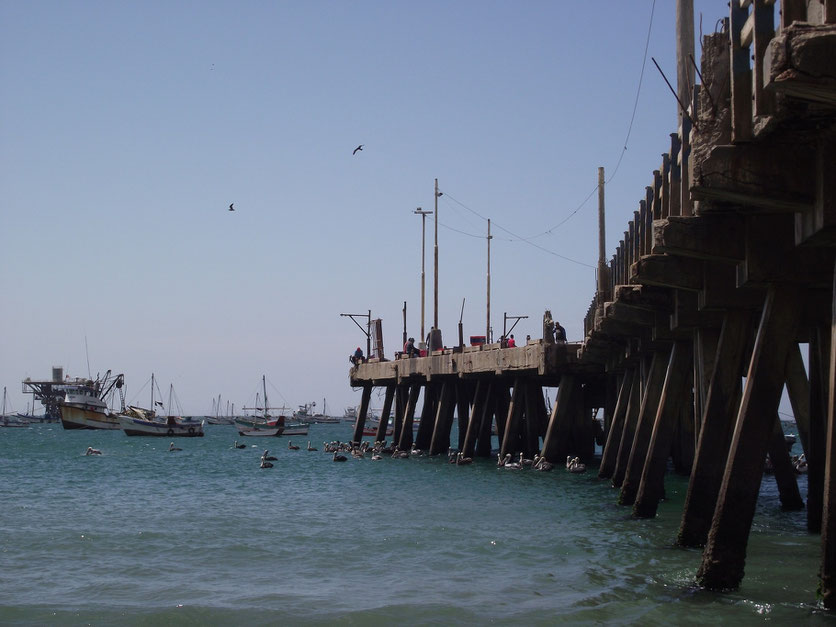
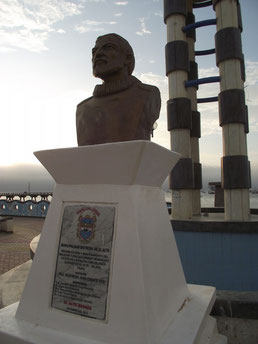
Cabo Blanco's main claims to fame come from Ernest Hemingway. According to our saviour family, he lived here for ten years, during which time he was inspired to write The Old Man and the Sea.
The village is also respected for the enormous marlin and other fish which can be caught off the coast. In 1953, Alfred Glassell caught a record breaking 1560 pound black marlin [that's just ridiculous].
More recently, Cabo Blanco has been known for hosting one of the most committing surfing competitions in the area each December. The fishermen told us that at times the waves can be up to 5m tall and crash right over the pier. I guess that's not a time for camping on the beach!

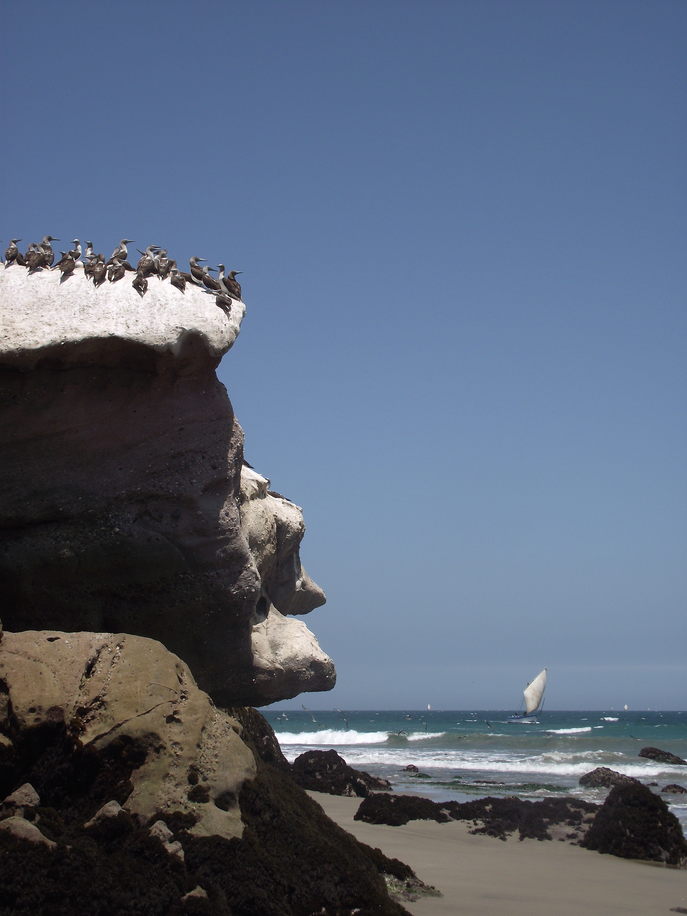


For a village surrounded by desert, Cabo Blanco has an amazing selection of animals and birds, the likes of which I'd only really expect to see on the Galapagos.
There's a rich sea-life, crazy crabs and all manner of coastal birds which flock to the pier for the fishermen's scraps. Most excitingly walking around the Southern headland, we were surprised by several sea-lions. I'd never seen them up close before and think they would be intimidating if they weren't so eager to escape; floundering towards the sea they're just quite comical.
The birds however, will happily poo on your head as you pass, so watch out!
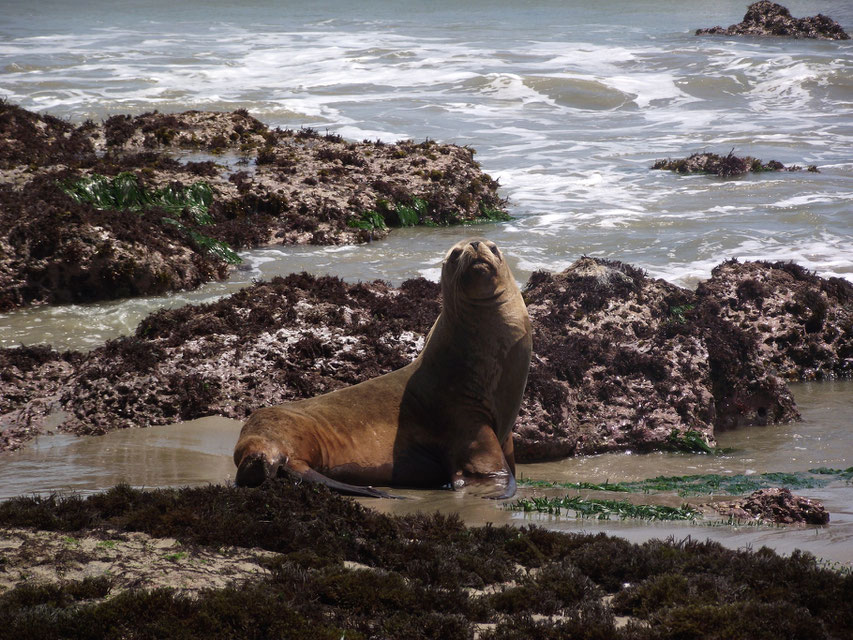
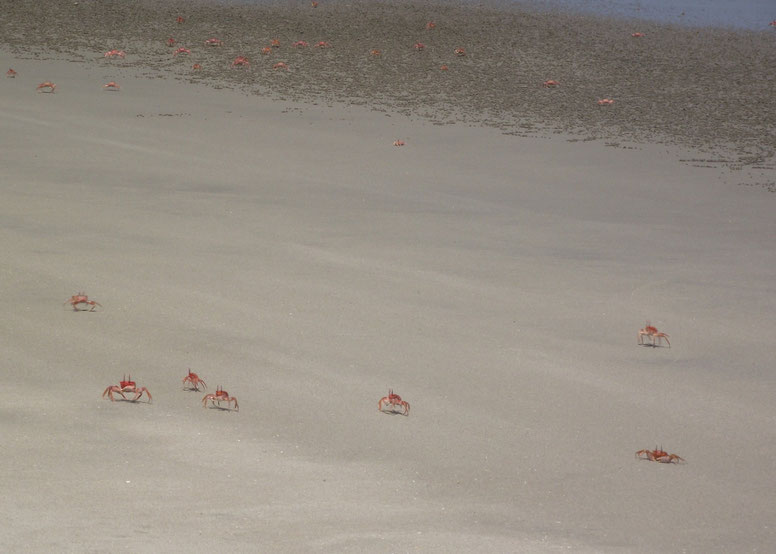

On our final night, the family invited us up for a drink and some food. Although our Spanish was stumbling, they were so welcoming it didn't matter. We were told how the father used to fish for a living, but now mends engines throughout the night to pay for his oldest two children to get through university and to support the younger girls.
Seeing his children get into university was what he called the 'fruits of his labor' and the couple were very happy with how their lives had worked out. Looking around, it was easy to see why.


To find Cabo Blanco, you will first need to catch a bus to El Alto in the North of Peru and then find a pick-up truck to take you down the hill. There's one slightly ageing hotel or it's perfectly possible to camp anywhere on the beach. Just ask the owner if you are near a house and be sure to clean up after you leave.

For more of my favourite places see...
- Why are we still in La Esperanza (Northern Ecuador)
- Castara- "Just a small part of paradise" (Tobago)
- Eight amazing seaside spots on the Isle of Islay- advice from a local (Scotland)
- Caqalai my favourite place on Earth (Fiji)
- Melbourne, it's street-art and why it would be cool to live there (Australia)